Mango sticky rice is a healthy and satisfying dessert featuring sweet gooey sticky rice served with a luscious coconut sauce and sliced mango. It is a popular Thai dessert that you can easily find at most Thai restaurants. But the homemade version contains less sugar, tastes just as satisfying, and is quite easy to prepare. (Gluten-Free, Vegetarian, Vegan)
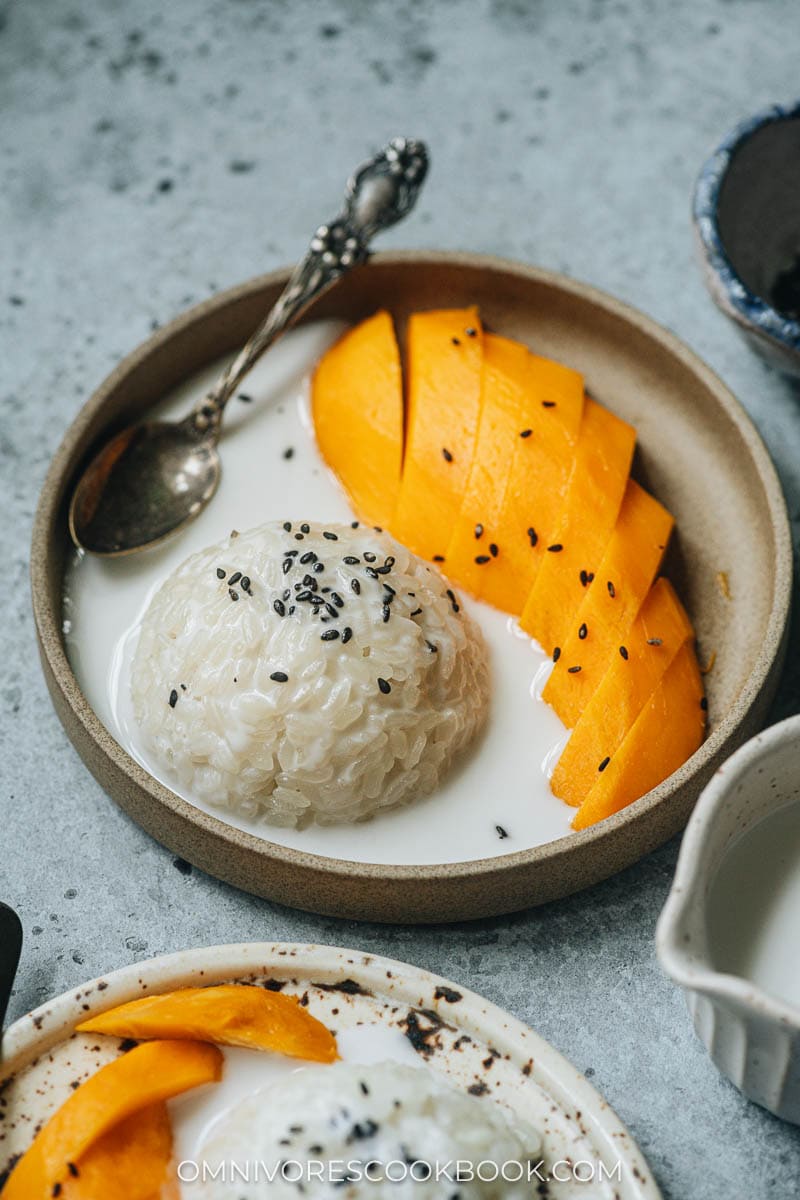
Prep Time: 10 minutes
Time: 30 minutes
Pre-soak the rice: 1 hour
Total Time: 1 hour 40 minutes
Servings: 4 to 6 servings
Original Recipe from Omnivore's CookbookRinse the sticky rice with tap water and use your hand to gently stir it. Drain the water to remove the excess starch. Repeat once, then add cold water to cover. Soak the sticky rice for a minimum of 1 hour, or up to overnight in the fridge. Once soaked, rinse again and drain the water. (*Footnote 3)
Transfer the rice to a heatproof bowl, add about 2" of water to your steamer (not into the rice), place the heatproof rice bowl on the steaming rack in the steamer, and cover the steamer. Turn to medium-high heat to bring the water to a boil. When the steam starts to come out of the pot, turn to medium heat. Steam for 20 to 25 minutes, until the rice is cooked through, with no hard raw bits in the middle. Remove the pot from the stove. Let sit, covered, while you prepare the other ingredients.
Make the sauce when the rice is cooking. Combine the coconut milk, sugar, and salt in a saucepan. Cook over medium heat or medium-low heat until the mixture is hot and the sugar is melted. Do not bring the coconut sauce to a boil.
(Optional) If the coconut milk you're using is thin: Combine the cornstarch and 4 tablespoons of water in a small bowl. Stir to completely dissolve the cornstarch. Add half of the slurry to the sauce. Stir immediately to thicken the sauce. You can adjust the thickness of the sauce by slowly adding a bit more water or cornstarch slurry, if needed. The sauce shouldn't be too thick, but should coat the back of a spoon. (*Footnote 4)
Carefully remove the bowl of sticky rice from the steamer with your oven mitts on. Pour 1 cup of the sauce into the bowl. Stir to mix well until the sauce is fully absorbed.
The mango sticky rice is ready to serve when the rice mixture and the sauce cool to room temperature or lukewarm.
To serve, transfer 1/3 cup of the coconut rice to each of several small serving bowls or plates. Place the sliced mango on the side. Pour a few spoonfuls of the extra coconut sauce on top of the rice. Garnish with toasted sesame seeds, if using. (*Footnote 5)
For serving later: It's important to note that mango sticky rice tastes the best when it's freshly made so I would highly recommend making it the same day you plan to serve it. If you have to make mango sticky rice beforehand, you should store the rice and sauce separately in the fridge. Before serving, gently heat the rice in the microwave or a steamer until warmed through and softened. Otherwise, the rice will have a very tough and dry texture.
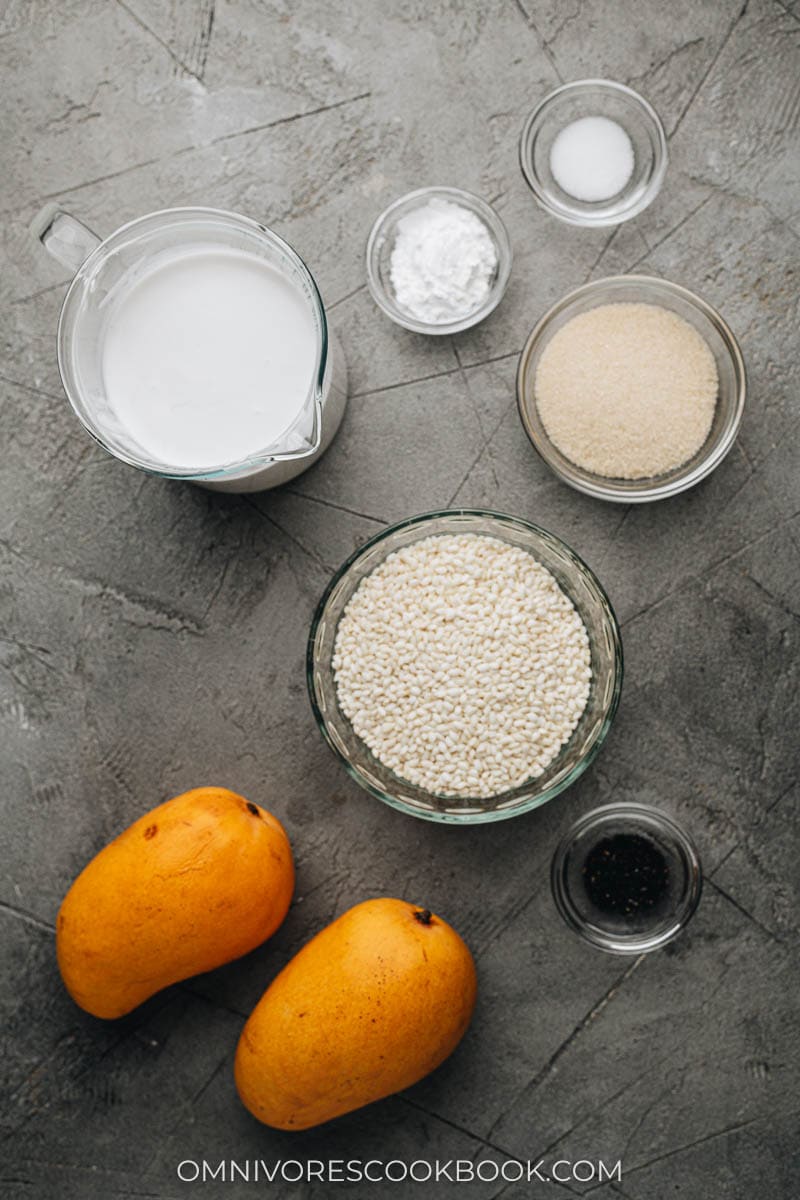
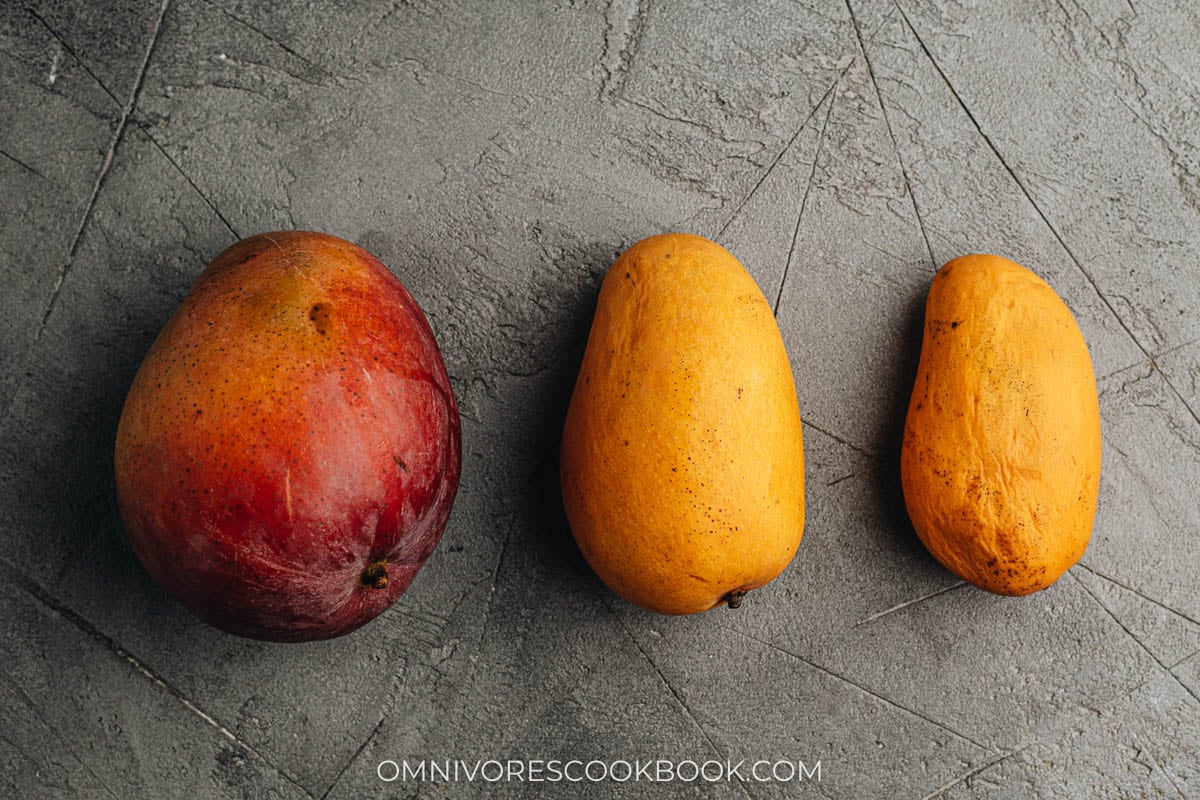
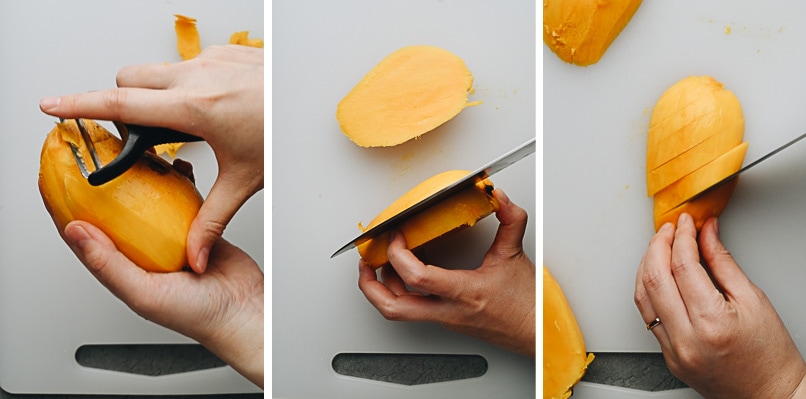
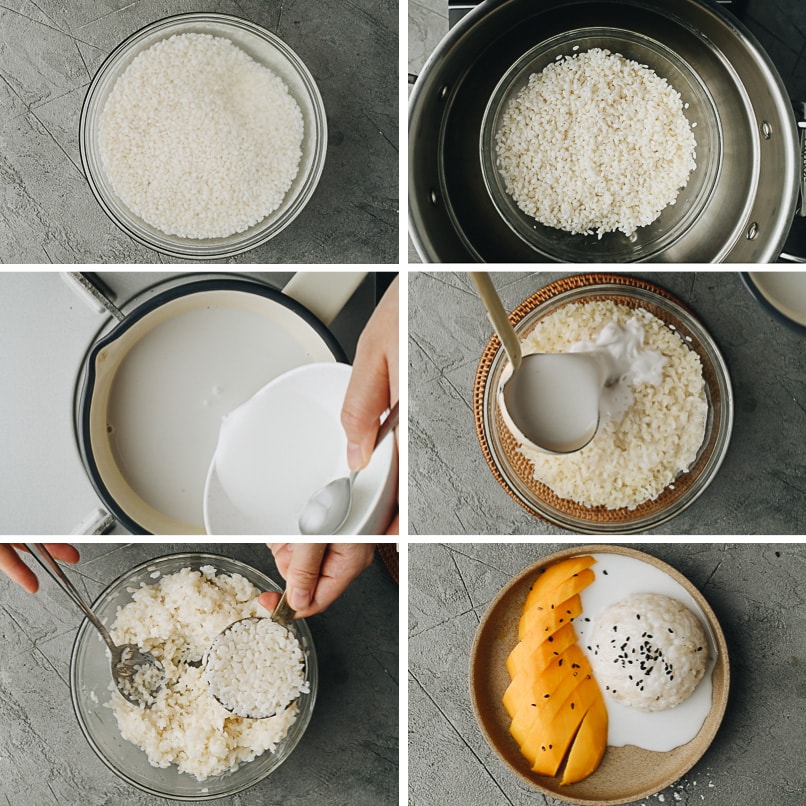
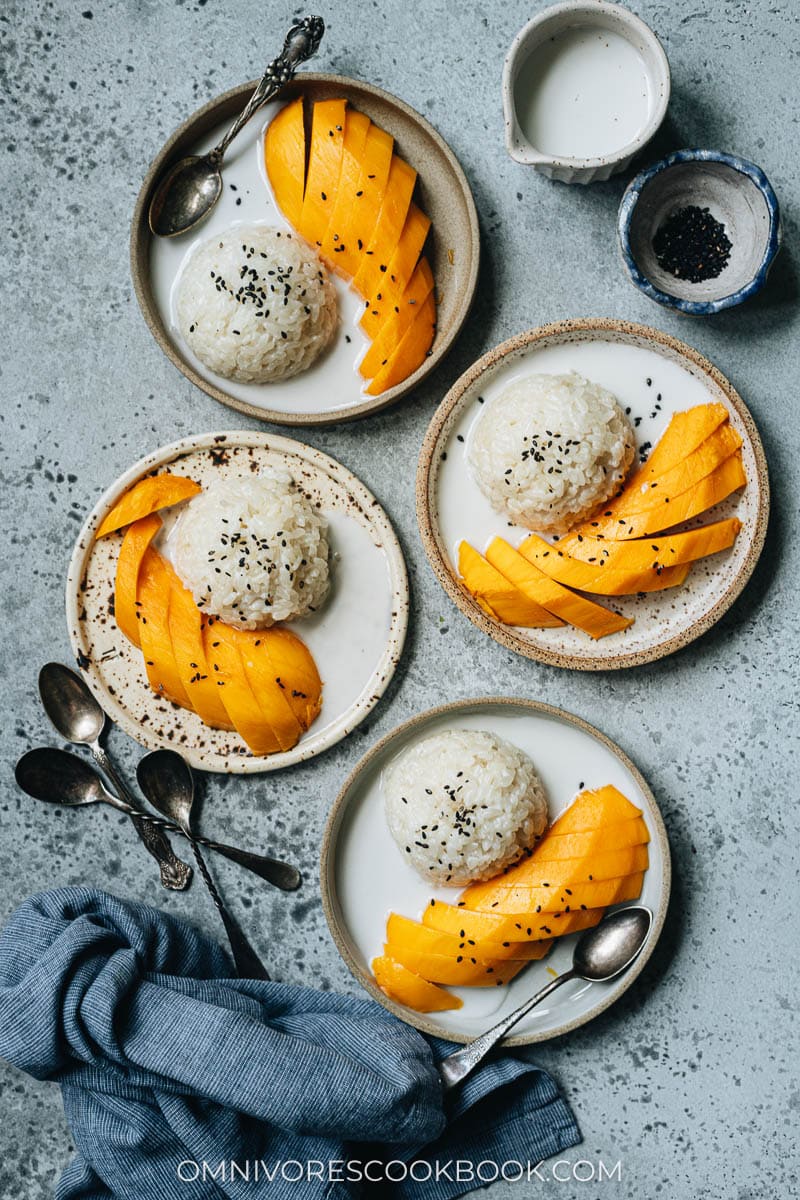
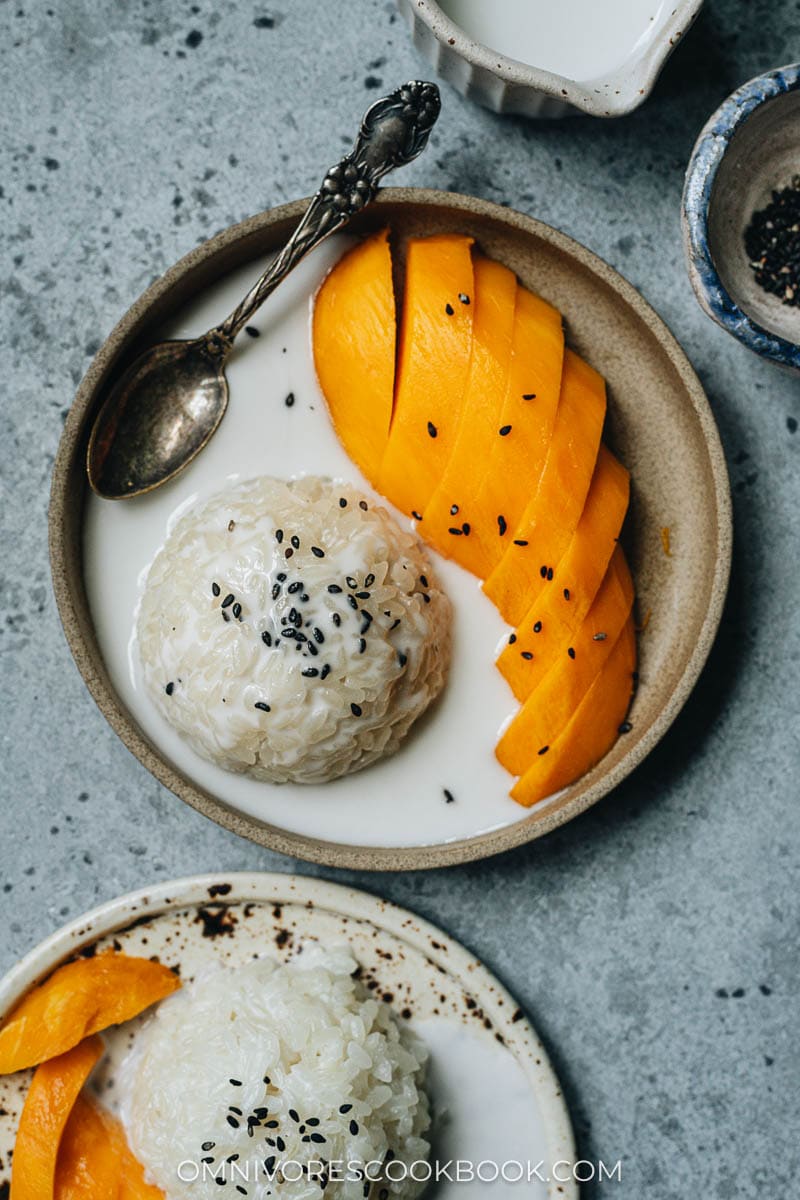
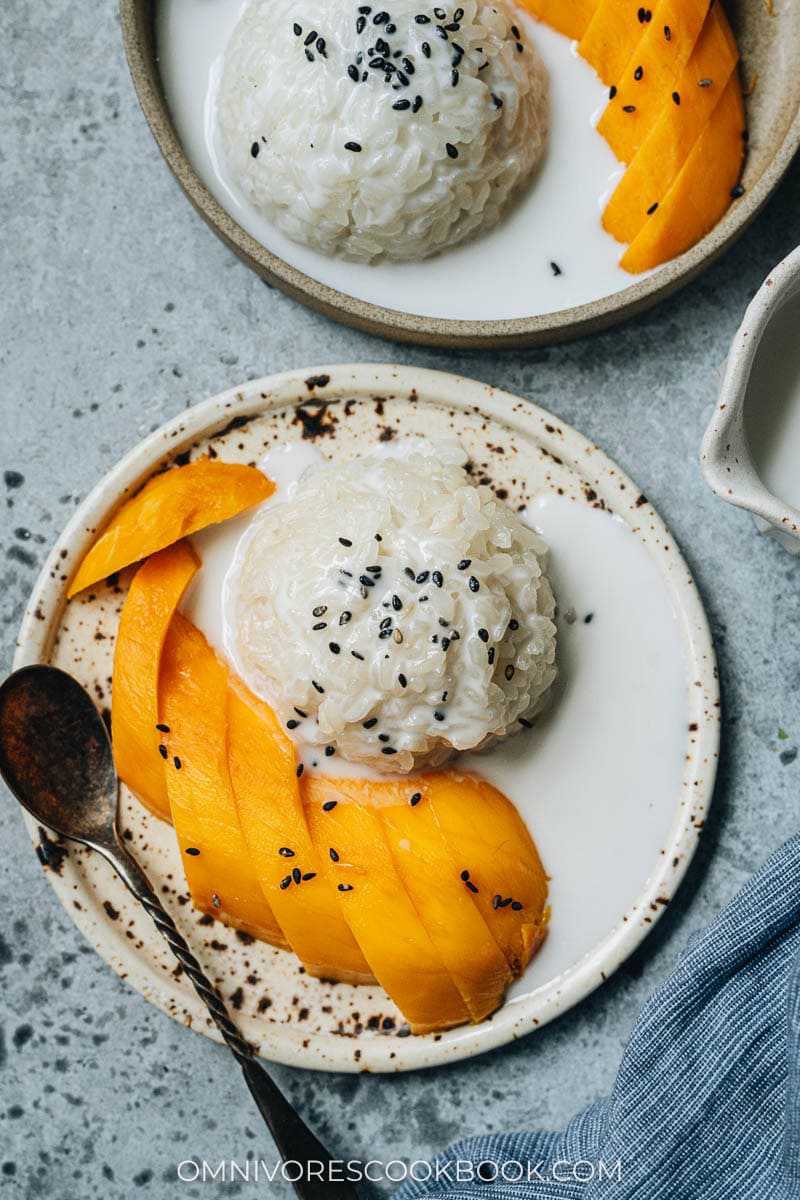
Serving: 1serving, Calories: 288kcal, Carbohydrates: 42.4g, Protein: 3.1g, Fat: 12.9g, Saturated Fat: 11.1g, Sodium: 276mg, Potassium: 191mg, Fiber: 2.8g, Sugar: 24.9g, Calcium: 13mg
The Bon Appetit website demonstrates very effective typographic hierarchy that contributes to its readability. The separation between the estimated cooking time, ingredients, servings, and step-by-step instructions is well-defined and ensures a clear presentation of each recipe.User-generated content, such as reviews, also provides valuable feedback on recipes.
New York Times Cooking's website design is very inviting and user-friendly. For example, the "recipe of the day" feature is a fun and exciting way users can look forward to discovering a new recipe. Additionally, the thoughtful categorization of recipes into trending, latest, and top searches adds a well-organized and appealing element to the site.
Delish's website showcases high-quality food photography. These clear and appetizing photos help users decide what to cook. Additionally, having related recipes displayed at the bottom of the page encourages exploration by allowing users to find new and exciting recipes that align with their interests.
Pinterest's grid-based design creates an engaging and immersive experience. It's easy to navigate, and users can quickly understand how to save, organize, and discover content.
The Vivienne Westwood website stands out to me for its visual appeal because it features a diverse range of elements that include videos, scrolling text, and an animated photo gallery on its homepage. Despite there being so many components, they work well together as a cohesive design system.
The Atlantic is a good example of a content-rich website that uses a minimalist approach to design and layout, emphasizing whitespace over clutter.The multi-column layout also effectively organizes news articles into different categories.